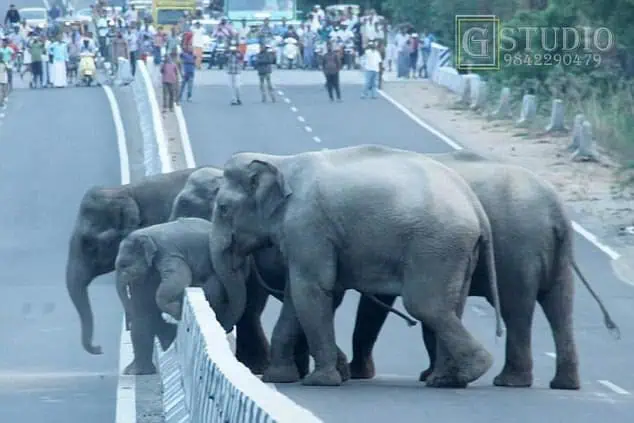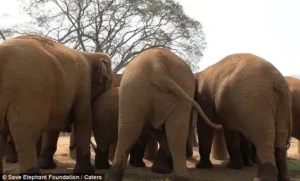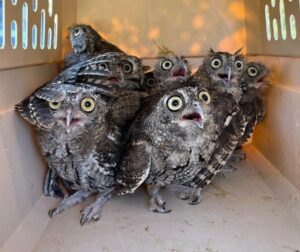Imagine the scene: a hot afternoon in Tamil Nadu, India. Traffic grinds to a halt, not for an accident, but for nature itself. A herd of elephants, led by a determined matriarch, is crossing the road. It’s one of those stories that seems charming at first, but quickly reveals a deeper, more troubling issue: the escalating Human-Elephant Conflict that threatens the life of both people and these magnificent animals.
Among the herd was a tiny calf, barely steady on its legs. When the elephants stepped onto the daunting stretch of asphalt, the little one froze, intimidated by the strange surface and the looming vehicles. In a moment captured by onlookers, the mother elephant gently but firmly nudged her baby forward with her trunk – a mother’s push guiding her child across the danger. While the crowd initially smiled at the tender sight, frustration grew as the delay stretched on.
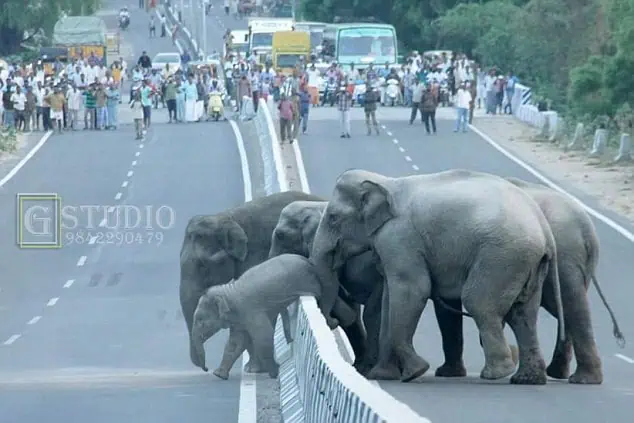
Ancient Paths, Modern Barriers
What many witnessed wasn’t just a cute traffic jam; it was a stark symptom of a nationwide problem. Elephants have followed ancient migration routes across India for centuries. But rapid human expansion – sprawling towns, expanding farmland, and highways slicing through forests – has blocked these vital paths. With their traditional corridors cut off, elephants have no choice but to wander into human-dominated spaces, leading inevitably to conflict.
The Coimbatore region, where this incident occurred, along with nearby areas like Hosur and Gudalur, is home to nearly 700 elephants. Encounters are increasingly common, and not always peaceful. This ongoing Human-Elephant Conflict carries a devastating cost.
The Tragic Toll
Wildlife groups estimate that in this region alone, around 20 people lose their lives each year in incidents involving elephants. The animals suffer terribly too; 10 to 15 elephants are killed annually in the area, often struck by vehicles or targeted by poachers when they stray near villages. Nationally, the numbers paint an even grimmer picture. In 2015 alone, conflicts across India claimed the lives of 391 people and 39 elephants. Behind every number is a tragedy – a family grieving, a herd disrupted.
Read More: Man Loses 360 Pounds Naturally, Internet Rallies to Support His Next Step
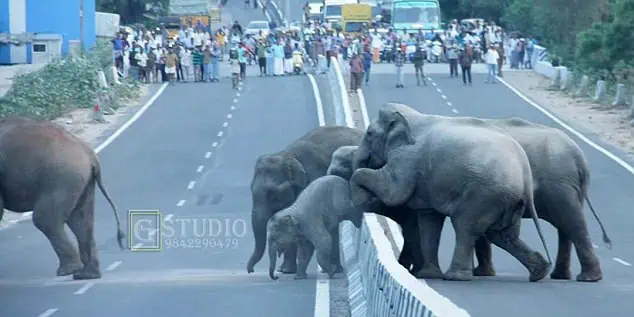
A Plea for Coexistence
Wildlife activist Umesh Marudhachalam cuts straight to the issue: “The problem is not with the animals; it is with humans. We have destroyed their habitat and encroached on their migration routes. What remains of these buffer zones should be preserved.” Elephants aren’t invaders; they are displaced travelers trying to follow paths etched into their instincts long before roads existed. Blocking these routes forces them into desperate situations – raiding crops for food or wandering onto dangerous highways.
That day in Tamil Nadu, the traffic eventually moved on. The baby elephant, thanks to a mother’s push, made it safely across. But the larger journey – the struggle for humans and elephants to coexist peacefully – is fraught with challenges. The sight of that mother guiding her calf wasn’t just a touching moment; it was a symbol of survival, a reminder that these intelligent creatures are simply trying to navigate a world that is rapidly shrinking around them.
Unless we prioritize protecting the remaining wild spaces and finding ways to allow safe passage for wildlife, these heart-wrenching stories of Human-Elephant Conflict will only continue, often ending not with awe, but with tragedy.
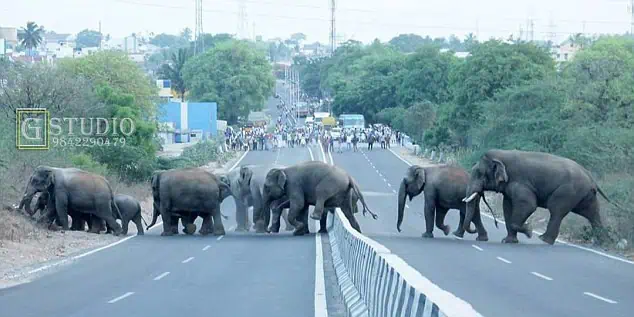
Full Story: The Hidden Meaning Behind Princess Diana’s Cannes Gown: A Heartfelt Farewell to Grace Kelly
